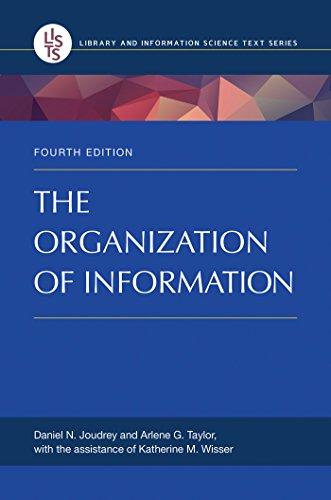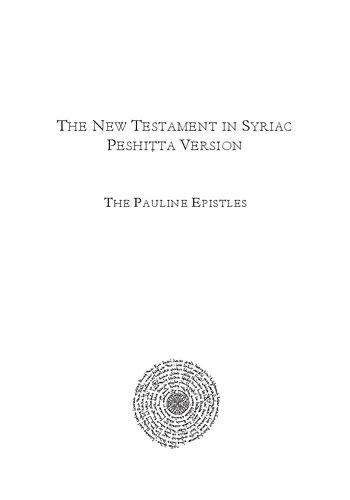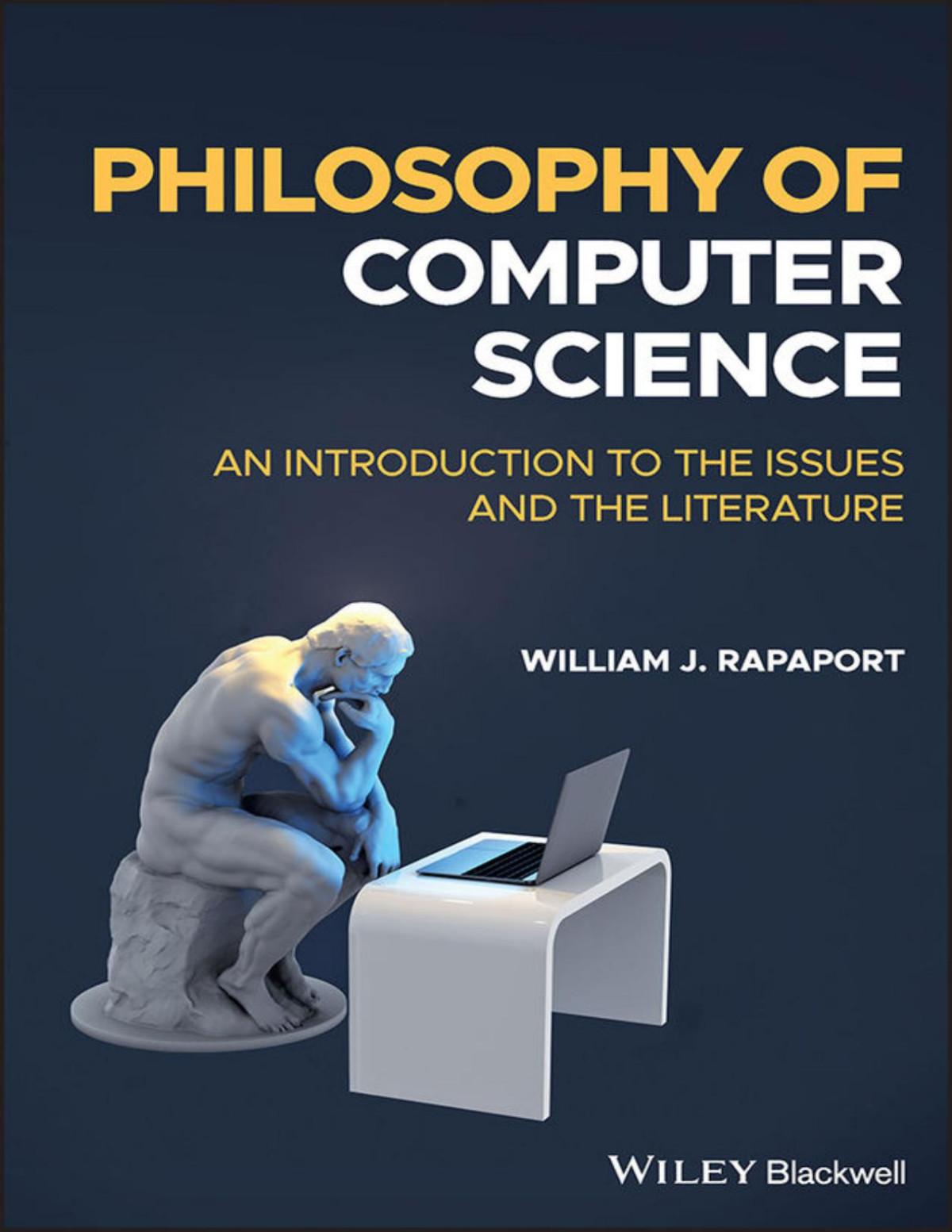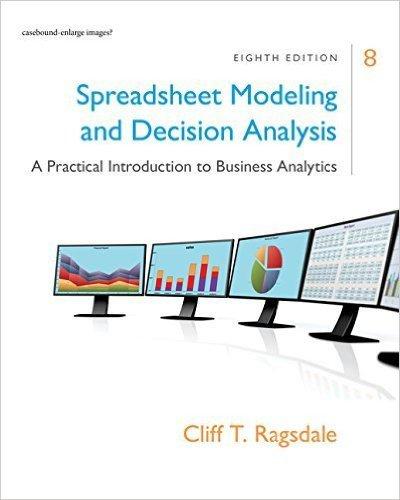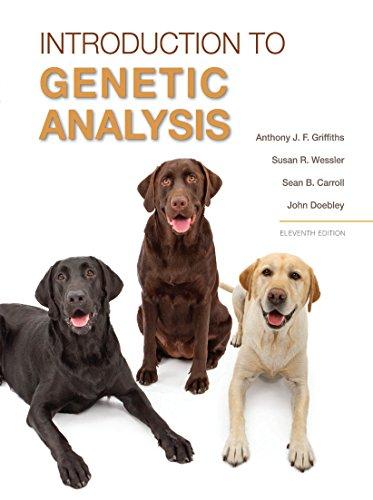Text Analytics
An Introduction to the Science and Applications of Unstructured Information Analysis
John Atkinson-Abutridy
First edition published 2022 by CRC Press
6000 Broken Sound Parkway NW, Suite 300, Boca Raton, FL 33487-2742
and by CRC Press
4 Park Square, Milton Park, Abingdon, Oxon, OX14 4RN
CRC Press is an imprint of Taylor & Francis Group, LLC
© 2022 John Atkinson-Abutridy
Reasonable efforts have been made to publish reliable data and information, but the author and publisher cannot assume responsibility for the validity of all materials or the consequences of their use. The authors and publishers have attempted to trace the copyright holders of all material reproduced in this publication and apologize to copyright holders if permission to publish in this form has not been obtained. If any copyright material has not been acknowledged please write and let us know so we may rectify in any future reprint.
Except as permitted under U.S. Copyright Law, no part of this book may be reprinted, reproduced, transmitted, or utilized in any form by any electronic, mechanical, or other means, now known or hereafter invented, including photocopying, microfilming, and recording, or in any i nformation storage or retrieval system, without written permission from the publishers.
For permission to photocopy or use material electronically from this work, access www. copyright.com or contact the Copyright Clearance Center, Inc. (CCC), 222 Rosewood Drive, Danvers, MA 01923, 978-750-8400. For works that are not available on CCC please contact mpkbookspermissions@tandf.co.uk
Trademark notice : Product or corporate names may be trademarks or registered trademarks and are used only for identification and explanation without intent to infringe.
Library of Congress Cataloging‑in‑Publication Data
Names: Atkinson-Abutridy, John, author.
Title: Text analytics : an introduction to the science and applications of unstructured information analysis / John Atkinson-Abutridy.
Description: First edition. | Boca Raton : CRC Press, 2022. | Includes bibliographical references and index.
Identifiers: LCCN 2021056159 | ISBN 9781032249797 (hardback) | ISBN 9781032245263 (paperback) | ISBN 9781003280996 (ebook)
Subjects: LCSH: Text data mining. | Natural language processing (Computer science) | Semantics—Data processing. | Document clustering.
Classification: LCC QA76.9.D343 A85 2022 | DDC 006.3/12—dc23/eng/20220105
LC record available at https://lccn.loc.gov/2021056159
ISBN: 978-1- 032-24979-7 (hbk)
ISBN: 978-1- 032-24526-3 (pbk)
ISBN: 978-1- 003-28099-6 (ebk)
DOI: 10.1201/9781003280996
Typeset in Minion by codeMantra
eResources are available for download at https://www.routledge.com/Atkinson-Abutridy/p/ book/9781032249797
To Ivana, my wife and my light
List of Figures
Figure 2.10
Figure 3.4
Figure 3.5
Figure 3.6
Figure 3.7
Figure 6.1
Figure 6.2
Figure 6.9
Figure 6.10
Figure 6.11 General network structure for context prediction
Figure 7.3 E xample of three clusters represented by 2-dimensional vectors
Figure 7.4 A document clustering system
Figure 7.5 Clusters distribution based on their centroids
Figure 7.6 Spatial distribution of document vectors
Figure 7.7 Generating three clusters from a corpus of documents
Figure 7.8
Figure 7.9
Figure 7.11 Some shapes of SOM topologies: (a) rectangle (2D), (b) octahedron (2D), and (c) linear (1D)
Figure 7.12 Geometric representation of clusters in SelfOrganizational Map (SOM)
Figure 8.1
Figure 8.3
Figure 8.4 Dependency modeling between documents, topics and words
Figure 8.5 Modeling topics with Dirichlet distribution
Figure 8.6 Dirichlet distribution on a 2-simplex for different values of α
Figure 8.7 Topic visualization for a sample corpus
Figure 8.8
Figure 8.9
Figure 9.1
Figure 9.2 Training a text classification model 189
Figure 9.3 Entropy for probability distribution of X 196
Figure 9.4 Computing indicator functions and probability of classes 20 0
Figure 9.5 A n example of a Receiver Operating Characteristic (ROC) curve 202
Table 4.3
Table 6.1
Preface
When I thought about writing this book, I wasn’t clear enough where to start, as there are many related topics that could be addressed. However, it was clear to me that I wanted to share knowledge in the simplest possible way, so that professionals with basic knowledge could not only understand the theoretical and practical topics related to text analytics but also perceive their applications and impact in a cross-sectional way in many areas.
The challenge wasn’t simple, because despite my experience as an academic, I’m used to writing specialized scientific articles (papers) and technical books, giving technical conferences to scientific audiences and directing scientific-technological projects evaluated by experts, etc. that is, activities aimed at professionals/scientists who are able to understand complex issues. But this isn’t the case for common professionals and specialists in general; in other words, accessible and understandable formal literature was required for them to understand the fundamentals in a simple way as well as the applications.
There were several alternatives to address the above, such as theoretical books, which are already available. However, these are usually focused toward more advanced professionals and/or postgraduate students leaving aside practical and applied aspects. On the other hand, there are several practical books focused on programming aspects; however, they’re usually highly biased to the author’s own conception of the subject. Furthermore, in my experience as an academic teaching text analytics and text mining courses for many years, both within and outside Chile, I’ve been able to verify how the students, professionals, or technicians who rely on such books simply don’t understand what they’re doing, not being able to compare/a nalyze methods or models, being unable to go beyond what’s written. This is mainly because they’re over-focused on coding in specific languages, where, unfortunately, many functionalities are arranged as
“ black boxes”, that is, hiding all the technical details, making it hard to replicate their experiences using other computational methods or tools.
The book’s nature was clear then. This should be an introductory book combining the basic theoretical foundations of the different paradigms and methods of textual analytics, with practical aspects, accompanied by examples in some programming language, which would allow us to fully understand the background and logic of computational methods, but at the same time, being flexible enough to use and implement them in other languages or computational tools.
I should take advantage of my academic experience to help professionals better understand computational concepts and methods. For more than 25 years, I’ve taught undergraduate and postgraduate courses related to text analytics, text mining, natural-language processing, and artificial intelligence at several national and foreign universities. While doing this, I learned a lot from students and professionals alike, understanding what was easier or difficult for them to understand, their questioning of what was established, their ways of taking something complex and simplifying it, etc.
On the other hand, my extensive experience as a scientific researcher and consultant, developing and leading scientific projects, and transferring technologies to the public and private sectors, should also have something to say in the way I’m focusing this book. Indeed, much of what the book conveys had to do not only with the basis behind computational methods but also with the challenges and considerations involved in the study, use and design of computational methods in real practical problems. Thus, the book is the result of both types of experiences, which allows us to understand not only the how but also the why.
After all these years doing this, why am I creating this text analytics book now? Globally, this is a long-standing topic, and we started seeing this in the mid-1990s in Chile, at the academy. However, in many ways, society and industry weren’t prepared, and, up to a certain extent, many didn’t see the need to be prepared, considering it to be something abstract and, therefore, impractical, taking into account not only the small amount of data available for them in that period but also performing several analytical tasks manually, like the old days.
However, the access and size of data sources, and in particular unstructured ones such as texts and documents, have experienced exponential growth in the last 10 years. This led to important scientific advances in both new and improved methods of text analytics as well as a greater need
for companies, not only to analyze structured information automatically per se but to generate insights from it, improving their decision-making and business productivity.
Nor is it fortuitous that the writing of this book went through two major local and international crises. First, there was the unprecedented social crisis that affected Chile in October 2019. Then, since the end of 2019, the world has been affected by a gigantic global pandemic of the COVID-19 disease, and, even now, when finishing this book, when it will come to an end is still uncertain. But what do these two recent events have in common?
In addition to the already increasing information overload, in the case of Chile, the social crisis generated an enormous flow of information, especially related to social media information, whose analysis was key to making strategic decisions in terms of discovering links in informal textual information. On the other hand, in the case of the pandemic, there has been a large accumulation of scientific literature (i.e., formal textual information), around the investigations that shed light on various factors related to COVID-19, and that, due to its dimension (more than 45,000 articles) and complexity, it’s necessary to have advanced textual analytics methods that can automatically extract and discover relevant knowledge that allows research to progress, a task that clearly cannot be performed manually by human experts.
The above shows once again not only the technological, critical, and strategic relevance of text analytics but also the need of a book capable of introducing this technology as a powerful decision-making tool.
Crises bring opportunities, and this book was written in the midst of a crisis.
ABOUT THIS BOOK
This is an introductory book to the science and applications of text analytics or text mining, which enables automatic knowledge discovery from unstructured information sources. With this purpose, the book introduces the main concepts, models, and computational techniques that allow solving several real decision-making problems coming from textual and/or documentary sources.
Audience
If you have textual data sources that you need to understand, this is the right book for you. If you want to obtain textual data and want to take advantage of it to discover and/or detect important knowledge, this is also
the right book for you. If you want to understand the paradigms and computational methods to perform textual analytics, this book then is a must for you. If you are looking to understand the basic theoretical and practical aspects to teach a course in text analytics, this is definitely a suitable guide for you.
Although this book is introductory, it would help if you are familiar with the following aspects:
• Basic knowledge of linear algebra, statistics, and probabilities.
• Basic concepts of Machine Learning.
• Some knowledge of Python. If you don’t know how to use it, it’s not a problem since it’s really easy to learn. In particular, it would be useful if you’re familiar with the definition of functions, handling of storage structures (i.e., tables, lists, matrices, data frames, dictionaries, and files), and some basic visualization libraries.
Organization of the Book
This book has nine chapters, each of which contains two parts: (1) An introductory part that teaches the main concepts, paradigms and methods, models; and (2) a second part showing practical exercises in Python on everything that was studied in the chapter. On the other hand, for the reader’s familiarity and as complementary literature, each chapter will end with the basic terminology used internationally.
Chapter 1: Text Analytics
This chapter introduces the main concepts, approaches, and applications for the automatic analysis of unstructured information (i.e., texts) known as textual analytics. In addition, the textual analytics process, tasks, and main challenges are described.
Chapter 2: Natural-Language Processing
This chapter introduces the basic concepts and computational and linguistic techniques that make it possible for a computer to process natural language. In addition, the main techniques and the way in which they address different problems associated with language processing in texts written by humans are described (i.e., morphological analysis, syntactic analysis, semantic analysis, discourse analysis).
Chapter 3: Information Extraction
This chapter introduces the concepts and some methodologies for the identification and extraction of specific information from the document body, using NLP techniques (i.e., relation extraction, named-entity recognition). In addition, the main problems and how they can be solved to support the tasks of text analytics are also described.
Chapter 4: Document Representation
This chapter introduces the different concepts, approaches, and models to computationally characterize and represent textual information in the form of documents so that they can be used in textual analytic tasks. Typical approaches based on indexing methods and space model vector for documents are described (i.e., term frequency models, inverse document frequency models).
Chapter 5: Association Rules Mining
This chapter introduces the main concepts, methods, and problems associated with the patterns extraction from documents, in the form of association rules. The main approaches and metrics for evaluating the quality of the discovered patterns are described (i.e., APRIORI algorithm).
Chapter 6: Corpus-based Semantic Analysis
This chapter explores the fundamentals of different techniques and models, allowing readers to study and model the meaning of words and documents. For this, different approaches are described for the automatic generation of low-dimensional distributed representation or word embeddings (i.e., LSA, Word2Vec) that allow one to efficiently capture the meaning of words and documents in context from the training corpus.
Chapter 7: Document Clustering
This chapter describes computational concepts and methods for performing document clustering. Modern grouping principles, metrics, and algorithms (i.e., K-means, self-organizing maps) are introduced to find hidden patterns in the document corpus.
Chapter 8: Topic Modeling
This chapter introduces the main concepts and methods for grouping documents based on latent topics within those documents. The main
approaches for the automatic generation of topics based on probabilistic models (i.e., pLSA, LDA) are discussed.
Chapter 9: Document Categorization
This chapter describes the main concepts, models, and techniques for performing automatic text categorization. Different probabilistic and stochastic methods are described to predict the category to which the documents belong from a training corpus (i.e., Naïve Bayes classifier, Maximum entropy classifier).
Exercises
Each chapter has an exercise section that shows examples and simple practical applications written in Python of the different models and methods described. Each chapter introduces concepts that are cumulative, so your ha nds-on exercises also reuse code functionality from previous chapters. The sample programs are divided by chapter, and there’s also a functions library defined in all chapters common to various exercises called “utils.py”. All this, together with all the text documents used in each exercise, are available on the book site: https://www.routledge.com/ Atkinson-Abutridy/p/book/9781032249797
Everything is programmed in Python 3.7 in the Spyder environment for Windows, under the Anaconda1 distribution. In addition, we use methods and functions that are available in two libraries:
• NLTK 2: The Natural-Language Toolkit (NLTK) was created by academics and researchers as a tool to create complex natural-language processing (NLP) functions and algorithms for multiple human languages using Python. In addition to libraries for different NLP tasks, NLTK includes sample datasets and graphical demos to explain the principles of NLP tasks.
• SpaCY3: This is an NLP library in Python and Cython designed to build industrial systems. SpaCY includes several pretrained machine learning and statistical models for more than 50 languages.
1 https://www.anaconda.com/products/individual
2 https://www.nltk.org/
3 https://spacy.io/
Both provide functionality for similar tasks. However, NLTK is more aimed at scientists/researchers who want to build and experiment with more complex algorithms, while SpaCY is oriented toward application development, providing access to tasks with the best results, but not allowing for practical deep experimentation compared to NLTK.
In order to have the facilities provided by both tools, some packages must be installed through the Anaconda command console:
pip install spacy
pip install --user -U nltk
In addition, a pretrained language model for English4 must be installed in SpaCY, which is based on a news corpus (en_core_news_sm):
python -m spacy download en_core_news_sm
On the other hand, sample documents in the form of short news, and those used in the exercises of each chapter are available in the corpus folder on the book site. This contains a sample of international news summaries divided in three subdirectories: music (22 summaries), sports (10 summaries), and coronavirus (16 summaries). In addition, for some exercises, data sets available in three CSV format files will be used: “t raining.csv” (data for model training), “testing.csv” (data for model testing), and “new.csv” (data for model application).
John Atkinson-Abutridy
Santiago, Chile
4 https://spacy.io/models/en

